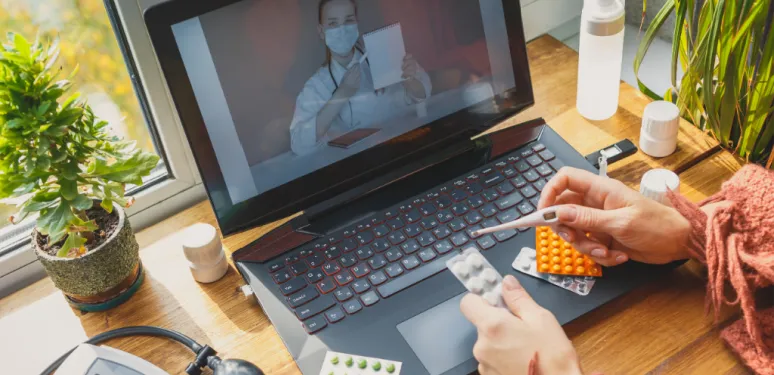In 2020, millions of Americans adjusted to video conferencing for work, school, socialization and more. But what about for healthcare? Yes, video-visits with doctors peaked in popularity as a result of the COVID-19 pandemic. However, nearly 1 in 5 U.S. households still reported that they had at least one member who was unable to get care or was forced to delay care for a serious condition.
It should be no surprise, then, that telehealth solutions are gaining traction — and not just for the healthcare industry, but for technologists, developers and broadband providers as well. In fact, telehealth was a thriving conversation during the 2021 Consumer Electronics Show (CES) in early January.
“The COVID-19 pandemic created the pressure to further digitize our [healthcare] systems,” said Dr. Vivian Lee, vice president of platforms for Verily in a CES panel titled Digital Health in 2020: Rules for Contagion, “It’s advantageous to everyone to move to digital health and get access to care when and where you need it.” And, Dr. Lee noted, telehealth technologies are already improving patients’ health and creating better outcomes when in use.
Cable broadband providers are hard at work on their piece of the telehealth puzzle: the reliable, high-speed networks that power telehealth technologies.
U.S. broadband networks currently provide speeds of 1 gigabit to over 80% of homes in both urban and rural areas. These speeds enable connected telehealth devices to pass data and information back to healthcare providers remotely, then quickly allow providers to analyze that data and make diagnoses. Simultaneously, cable providers are investing billions of dollars annually on the roadmap to 10G, the broadband technologies that will deliver 10 gigabits of speed with enhanced capacity, reliability and security. 10G’s enhanced capacity anticipates a surge in connected devices, including telehealth devices, running at once and provides the low latency that is critical for emerging telehealth solutions.
Imagine this: a patients’ home broadband network powers hundreds of connected devices, including healthcare devices that can do everything from taking the patient’s temperature and blood pressure, to monitoring the patient’s everyday health for changes or symptoms that indicate more serious issues. Those devices immediately and seamlessly connect back to providers to deliver a holistic home healthcare solution.
This isn’t a Sci-Fi movie. Much of this technology already exists and is being improved upon each day. While some of the most emerging technologies are being tested in Mediacom’s 10G SmartHome in Ames, Iowa, including telehealth solutions from UnityPoint Health, others are already on the market and available to consumers.
For example, connected healthcare company, Trapollo, has been active in creating a “hospital in the home” experience over the past year. With Trapollo’s solution, patients can receive medical care from a hospital by utilizing an app on their smartphone or tablet that enables them to be fully monitored by their healthcare provider, to receive important medical advice or information, and to participate in two-way video communication.
“Now with smart homes being a part of the healthcare environment, the concept of creating the ‘Smart Healthy Home,’ as I like to call them, is here.” said Mike Braham, Trapollo’s chief executive officer. “There is a great amount of flexibility in what we can do both as a patient and as a caregiver.”
Another company, Kinsa, has developed an early warning system to detect and respond to contagious illness – a technology that has become critical in light of the COVID-19 pandemic. Kinsa utilizes a network of millions of smart thermometers to trick the spread of illness in real-time and forecast future outbreaks.
The company has already had success predicting flu incidents months out, and even on a city-by-city basis. With the right combination of broadband infrastructure, telehealth technology, and connected devices, Kinsa CEO and Co-Founder, Dr. Inder Singh, believes that the technology could have the power to predict – and prevent – the next pandemic.
“The power of the networks is amazing,” said Kinsa’s Dr. Singh, “If we can get communication with someone at the earliest sign or symptom, or when they first got sick, we could also see whether or when symptoms are starting and how fast they are spreading.”
Telehealth solutions hold an incredible amount of potential. Cable broadband providers continue to focus their efforts to build and upgrade broadband networks for the current and future demands of telehealth.









